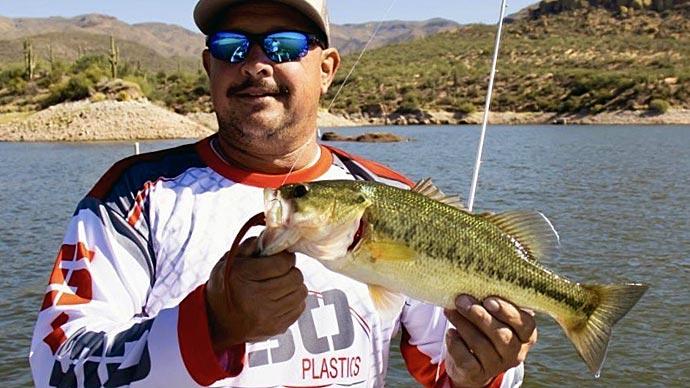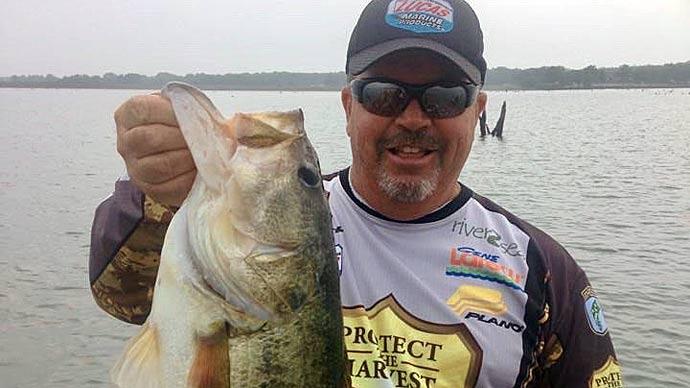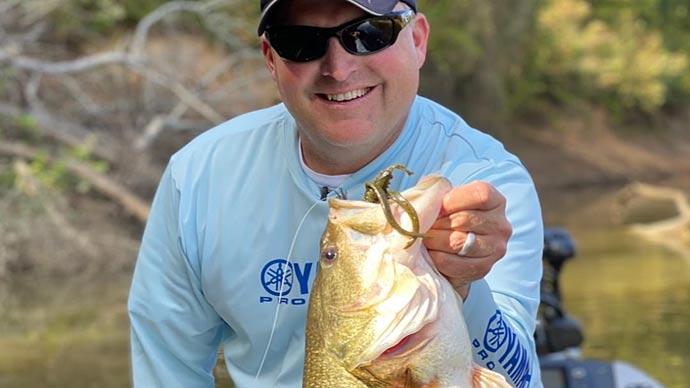
Chances are, every serious angler either owns or has heard of these miracle shades that let you see tens of feet into the fish's watery world. They are known as polarized sunglasses and have become more of a phenomenon than just a way to block out the sun. You know what a valuable resource they can be for those of you who own polarized sunglasses, and for those who don't, you are missing out on a great tool to catch fish.
First off, the idea of polarizing lenses is not a new concept. It has been around for decades. But until recently, it was only applied to high-end rifle scopes, binoculars, and camera optics. This was due primarily because up until recently, the process of polarizing a lens was very costly and time-consuming. With advances in optics, it has become practical and worthwhile to apply this polarization process to sunglasses and, in some cases, prescription eyeglasses.
Polarization, in essence, means that the glass is treated by aligning the molecules in the glass in one direction, which eliminates the refraction of light and drastically reduces visible glare. It's this reduction of glare that produces the effect of "seeing through the water." The wearer gets a clearer picture and a wider field of vision on and under the water by removing the surface glare. Of course, the lighting conditions will determine exactly how effective the glasses are on any given day. The sun directly overhead provides the wearer with the best possible results with these glasses. Most light is directed upwards and not at an angle that would shine directly at the lens, such as during sunrise or sunset.
Like any other product, quality comes at a price. The cost of these polarized sunglasses can run anywhere from ten to fifteen dollars for Wal-Mart discount rack types upwards of three hundred dollars for premium optics and designer names. I like to designate them into four categories: Low End, Lower Mid-Price, Upper Mid-Price, and High-End. Each of these categories has its pros and cons.
Low End
Lower-end polarized glasses can usually be found on either discount racks at Wal-Mart-type stores or in the discount section of outdoor catalogs. While the packaging may say polarized, the chances are that they aren't for ten to fifteen dollars. Instead, they are regular lenses with an anti-reflecting or anti-glare layer of cellophane. This gives the illusion of being polarized and, in many cases, does offer some of the features of having polarized lenses. However, there are two major pitfalls in units of this price range. Number one, there are usually limited styles. Number two, the cellophane coating on the lens has a nasty habit of peeling up or bubbling after a few months of use. Use in heat can speed up this peeling and bubbling as well.
Lower Mid Price
Units in this category usually fall between twenty to forty dollars and offer several significant improvements over their low-end counterparts. The first significant improvement and possibly the most important is that, in most cases, the lenses are polarized. There is no cellophane or film on the lens; it is treated when formed. The next significant improvement lies in the fact that there are far more styles in this category.
Quite possibly, the best deal in this category comes in the "store brand" glasses that Cabellas or Bass Pro Shops offers. They are well made, have polarized glass, and in many cases offer attractive styling. Another excellent deal in this category is the Remington/Stren Fisherman sunglasses. They offer a wrap-around design, as well as interchangeable lenses. The set comes with two different lenses, one smoke-colored and the other amber. This allows the user to select the proper tint for the lighting conditions on any given day. I have owned these before, and I will attest that you will receive a very unique and functional product for the price.
Upper Mid-Priced
Those units falling under this category usually range from fifty to one hundred dollars. Undoubtedly most of the good deals on this type of product fall somewhere here. Here is where one will usually find the best product for the money. In this category, all the glass is always polarized as it is formed and will sometimes offer a non-scratch coating. Also, in this category, look for metal components such as hinges. Sometimes glasses in this price range might offer extras like a cleaning kit. Another bonus to this category is that nearly all the current styles will be offered and, in many cases, can double as "off the water" sunglasses.
A couple of brands in this category is Costa-Del-Mar and Wiley-X. They offer great styles and a truly excellent lens that, in many cases, puts high-end models to shame. As of now, I own the Costa-Del-Mar Ex-Frame model, and needless to say, I am thrilled with them. They are incredibly comfortable and, in driving situations, actually cut the glare from shiny pavement surfaces, which is a nice feature when driving into blinding sun. As far as on the water performance, they offer everything a buyer could want in a pair of fishing sunglasses and serve as eye protection when running up or down the lake at full speed.
High End
The glasses in this category typically range more than a hundred dollars. These models are specifically designed for fishing and water sports and better polarization treatment and glare reduction.
One of these is Ocean Wave sunglasses, similar to Costa-Del-Mar but feature an exclusive "mirror blue" feature that cuts nearly 100% of surface glare. Also, it should be mentioned that added features could drive up the price on specific upper mid-priced models, like mirrored lenses. For instance, a pair of Wiley-X glasses with a smoke finish might retail for $99.99. Add mirrored or specialty lenses, and you're looking at $149.99 or more. It should be noted that mirroring a lens tends to cut a little more glare away, but it is usually more for cosmetics and appearance than anything else.
An excellent way to approach purchasing your eyewear is to evaluate your needs and then look from there. Unless you know exactly what you want, I will stay away from online ordering and stick with eyewear retailers or sporting goods stores where you have the chance to touch and try. Also, be sure of your retailers' return policy if you wish to return your purchase after giving them a shot on the water. It's not uncommon to try two or three pairs to settle on one pair you are genuinely comfortable with finally. Remember, it's best to consider your sunglasses another piece of fishing tackle and not something that's to be taken lightly.
Oddly, an angler who is willing to spend two hundred dollars on a reel gives you a look of utter disgust when you suggest to them to spend half that on something that will protect their eyes from harmful UV light and help them see structure and fish they would otherwise have missed. With that in mind, perhaps it's time to evaluate your sun protective eyewear and consider its many functions.
Catch you on the water...




